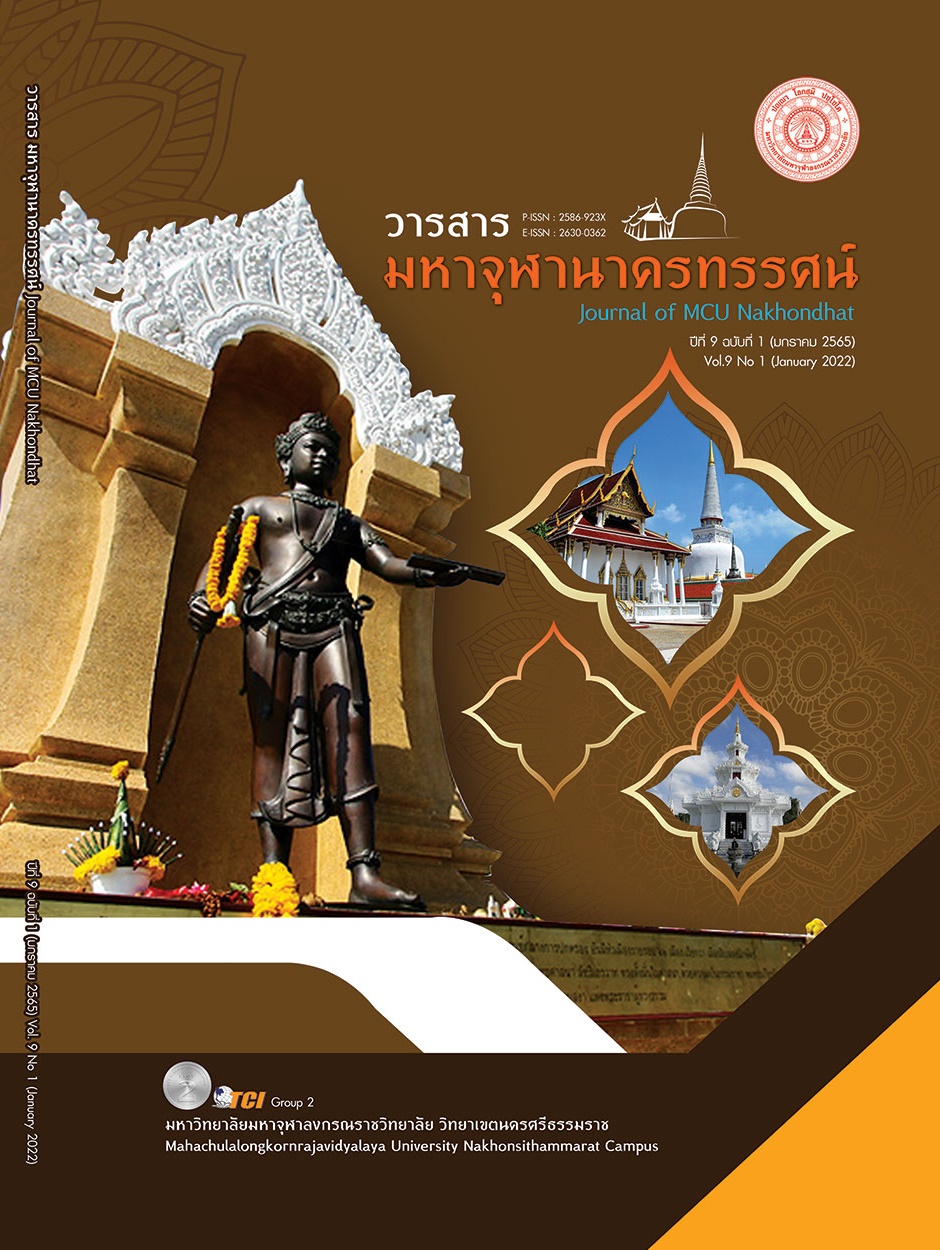FASHION LIFESTYLE PRODUCTS, WOMEN'S APPAREL IN THE FORM OF SWIMWEAR, INSPIRED BY THE HALA BALA FOREST
Main Article Content
Abstract
This research article aims to Presenting lifestyle fashion products at women's wear in the form of a swim wear. that can be applied to various types of apparel in everyday life Inspired by Hala Bala Forest. It is an action research. Through the design of fashion lifestyle products inspired by the Hala Bala forest, there is a 6-step process. 1) Collecting data related to research. Landing and data study 2) Data collection from 2 community groups/population samples. and Tomo village weaving group 3) Fabric dyeing experiment 4) Fabric design and pattern 5) Creation of prototype work (California dress) and 6) create real works. The results of the research were as follows: 1) From landing and studying the data of Tomo Village, it was found that there were a large number of woven cloth groups that produced woven cloth each year. But the sales volume is quite low. and didn't get the attention it deserved. 2) Analysis of data from community groups and population groups the main target group is those who are still studying. Have your own style, focus on your own image. Interested in art or fashion? and the secondary target group is working age group with interest in art, culture and fashion. have a high self. 3) Effect of dyeing of woven fabrics by using natural dyes from shellac with hot dyeing process resulting in the color as the researcher wants. 4) The design of the fabric pattern. Embroidery Techniques Make a digital print according to the drawn pattern. 5) Proceed to create 8 prototypes (calico suit) and 6) create a real set of fashion lifestyle products at women's wear in the form of a swim wear, amounting to 8 sets.
Article Details

This work is licensed under a Creative Commons Attribution-NonCommercial-NoDerivatives 4.0 International License.
References
ณรงศ์ศักดิ์ พงศ์ดี. (2558). เขตรักษาพันธุ์สัตว์ป่าฮาลา-บาลา. เรียกใช้เมื่อ 1 ธันวาคม 2563 จาก http://portal.dnp.go.th/Content/Pattani?contentId=3320
ตะวัน ตนยะแหละ และ นวัทตกร อุมาศิลป์. (2562). การพัฒนาเครื่องแต่งกายสตรีมุสลิมตามแนวโน้มการออกแบบแฟชั่นปี ค.ศ. 2014. วารสารวิชาการ ศิลปะสถาปัตยกรรมศาสตร์ มหาวิทยาลัยนเรศวร, 10(2), 114-126.
เทศบาลเมืองเบตง. (2563). ป่าฮาลา บาลา. เรียกใช้เมื่อ 1 ธันวาคม 2563 จาก https://www.betongcity.go.th/travel/detail/96/data.html
นวัทตกร อุมาศิลป์. (2561). นวัตกรรมสิ่งทอจากเส้นใยดาหลาสผลิตภัณฑ์แฟชั่นไลฟ์สไตล์โดยใช้ทฤษฎีความยั่งยืน. ใน วิทยานิพนธ์ศิลปกรรมศาสตร์ดุษฎีบัณฑิต สาขาวิชาศิลปกรรมศาสตร์. จุฬาลงกรณ์มหาวิทยาลัย.
นวัทตกร อุมาศิลป์ และพัดชา อุทิศวรรณกุล. (2561). นวัตกรรมสิ่งทอจากเส้นใยดาหลาสู่การออกแบบผลิตภัณฑ์แฟชั่นไลฟ์สไตล์. Veridian E-Journal,Silpakorn University ฉบับภาษาไทย สาขามนุษยศาสตร์สังคมศาสตร์ และศิลปะ, 11(3), 803-814.
ปรัชญ์ หาญกล้า และพรสนอง วงศ์สิงห์ทอง. (2557). การออกแบบเครื่องแต่งกายสตรีเพื่อพัฒนางานพื้นถิ่นให้เป็นสินต้าระดับชาติโดยใช้แนวคิดการออกแบบอย่างยั่งยืน: กรณีศึกษาผ้าทอมือ อำเภอเวียงเชียงรุ้ง จังหวัดเชียงราย. วารสารศิลปกรรมศาสตร์ จุฬาลงกรณ์มหาวิทยาลัย, 1(1), 24-31.
Design Academy. (2561). 20 หลักการพื้นฐาน Graphic Design. เรียกใช้เมื่อ 1 ธันวาคม 2563 จาก https://idxw.net/2018/11/10/20-หลักการพื้นฐาน-graphic-design/
Kanokorn Na Ranong. (2563). ป่าฮาลา-บาลา ป่าใหญ่บนพื้นที่ใต้สุดของประเทศไทย อุดมสมบูรณ์สมฉายา “แอมะซอนแห่งอาเซียน”. เรียกใช้เมื่อ 1 ธันวาคม 2563 จาก https://www.Bltbangkok .com/lifestyle/travelers-list/25670/
Sanook. (2563). ป่าฮาลา-บาลา แอมะซอนแห่งอาเซียน. เรียกใช้เมื่อ 1 ธันวาคม 2563 จาก https://www. m-culture.go.th/yala/ewt_dl_link.php?nid=1295
The MOMENTUM. (2563). บุกป่าแดนใต้แบบไม่ต้องฝ่าดง ชวนส่องนกเงือกใน ‘ฮาลา-บา ลา’ ป่าแอมะซอนแห่งอาเซียน. เรียกใช้เมื่อ 1 ธันวาคม 2563 จาก http://portal .dnp.go.th/Content/Pattani?contentId=3320


